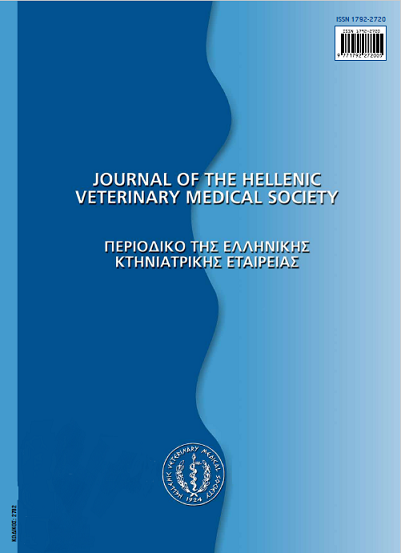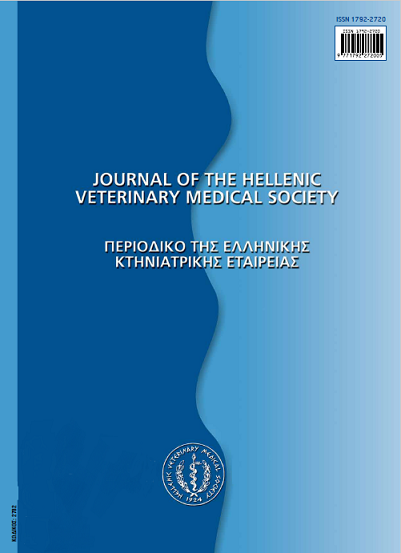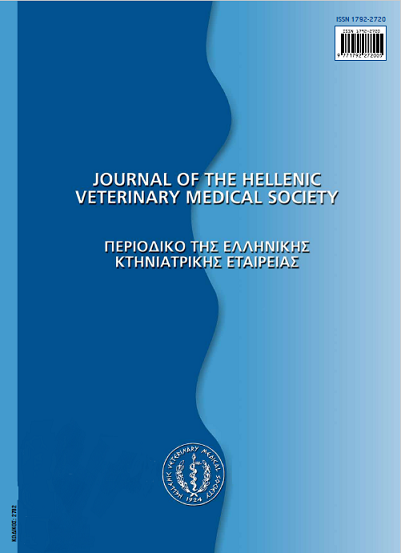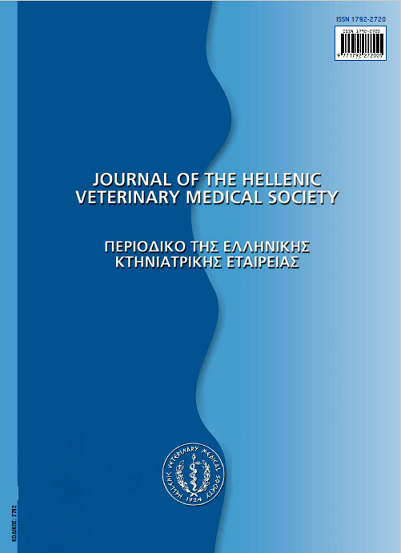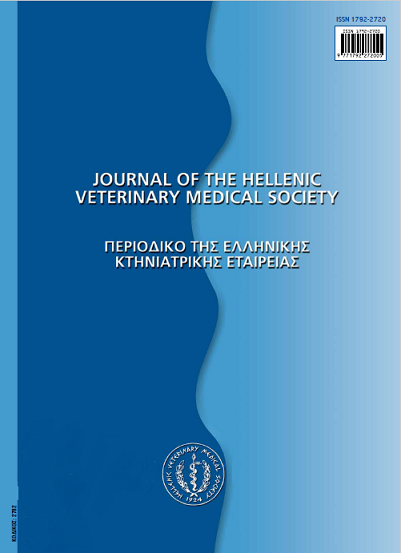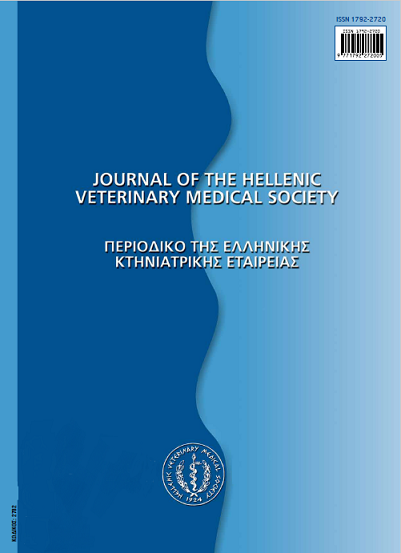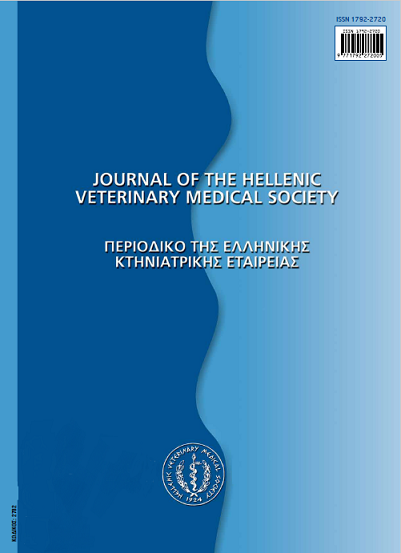Επιβίωση της Escherichia coli 0157:H7 σε βούτυρο βιολογικής ωρίμανσης κατά τη διάρκεια της συντήρησής του

Περίληψη
Μελετήθηκε η επιβίωση της Escherichia coli0157:Η7 σε 3 τύπους βουτύρου: α) χωρίς αλάτι, β) με αλάτι 0,46%και γ) με αλάτι 0,93%, που ενοφθαλμίσθηκαν με μικρό (ca. 3,14 logCFU/g) ή μεγάλο (ca. 4,80 log CFU/g) βακτηριακό πληθυσμό καισυντηρήθηκαν σε θερμοκρασίες 4°C και 12°C. Η συντήρηση διήρκεσε2 μήνες στους 4°C και μέχρι την εμφάνιση αλλοίωσης (20-26ημέρες) στους 12°C. Στους πειραματισμούς με μεγάλο πληθυσμότης Ε. coli Ol57:Η7 η μείωση των πληθυσμών στο τέλος της συντήρησηςστους 4°C ήταν 2,26 log CFU/g για τους τύπους χωρίς
αλάτι και με αλάτι 0,46% και 2,74 log CFU/g για τον τύπο με αλάτι0,93%. Στους πειραματισμούς με μικρό πληθυσμό της E. Coli0157:Η7 η μείωση των πληθυσμών ήταν 1,81 log CFU/g για τον
τύπο του βουτύρου χωρίς αλάτι, ενώ για τους άλλους δυο τύπουςβουτύρου η Ε. coli Ol57:Η7 ήταν ανιχνεύσιμη μόνο μετά από εμπλουτισμό.Στους πειραματισμούς που έγιναν στους 12°C με μεγάλοπληθυσμό της Ε. coli Ol57:Η7 η μείωση των πληθυσμών ήταν2,71 και 3,17 log CFU/g για τους τύπους του βουτύρου χωρίς αλάτικαι με αλάτι 0,46%, στις 20 και 22 ημέρες αντίστοιχα και η Ε.coli 0157:Η7 ήταν ανιχνεύσιμη μόνο μετά από εμπλουτισμό για τοντύπο με αλάτι 0,93% στις 26 ημέρες. Στους πειραματισμούς με μικρόπληθυσμό της Ε. coli Ol57:Η7 η μείωση των πληθυσμών ήταν1,88 log CFU/g για τον τύπο χωρίς αλάτι στις 20 ημέρες και η Ε.coli Ol57:Η7 ήταν ανιχνεύσιμη μόνο μετά από εμπλουτισμό γιατους τύπους με αλάτι 0,46% και 0,93% στις 22 και 24 ημέρες, αντίστοιχα.Το pH από μια αρχική τιμή 5,18±0,01 σε όλα τα εξετασθέντα δείγματα μειώθηκε από 0,06 έως 0,10 στο τέλος της συντήρησηςστους 4°C και από 0,48 έως 0,54 στο τέλος της συντήρησηςστους 12° C.
Λεπτομέρειες άρθρου
- Πώς να δημιουργήσετε Αναφορές
-
GOVARIS (Α. ΓΚΟΒΑΡΗΣ) A., PAPAGEORGIOU (Δ.Κ. ΠΑΠΑΓΕΩΡΓΙΟΥ) D. K., & PAPATHEODOROU (Κ. ΠΑΠΑΘΕΟΔΩΡΟΥ) K. (2018). Επιβίωση της Escherichia coli 0157:H7 σε βούτυρο βιολογικής ωρίμανσης κατά τη διάρκεια της συντήρησής του. Περιοδικό της Ελληνικής Κτηνιατρικής Εταιρείας, 53(2), 147–161. https://doi.org/10.12681/jhvms.15371
- Τεύχος
- Τόμ. 53 Αρ. 2 (2002)
- Ενότητα
- Research Articles

Αυτή η εργασία είναι αδειοδοτημένη υπό το CC Αναφορά Δημιουργού – Μη Εμπορική Χρήση 4.0.
Οι συγγραφείς των άρθρων που δημοσιεύονται στο περιοδικό διατηρούν τα δικαιώματα πνευματικής ιδιοκτησίας επί των άρθρων τους, δίνοντας στο περιοδικό το δικαίωμα της πρώτης δημοσίευσης.
Άρθρα που δημοσιεύονται στο περιοδικό διατίθενται με άδεια Creative Commons 4.0 Non Commercial και σύμφωνα με την άδεια μπορούν να χρησιμοποιούνται ελεύθερα, με αναφορά στο/στη συγγραφέα και στην πρώτη δημοσίευση για μη κερδοσκοπικούς σκοπούς.
Οι συγγραφείς μπορούν να καταθέσουν το άρθρο σε ιδρυματικό ή άλλο αποθετήριο ή/και να το δημοσιεύσουν σε άλλη έκδοση, με υποχρεωτική την αναφορά πρώτης δημοσίευσης στο J Hellenic Vet Med Soc
Οι συγγραφείς ενθαρρύνονται να καταθέσουν σε αποθετήριο ή να δημοσιεύσουν την εργασία τους στο διαδίκτυο πριν ή κατά τη διαδικασία υποβολής και αξιολόγησής της.



